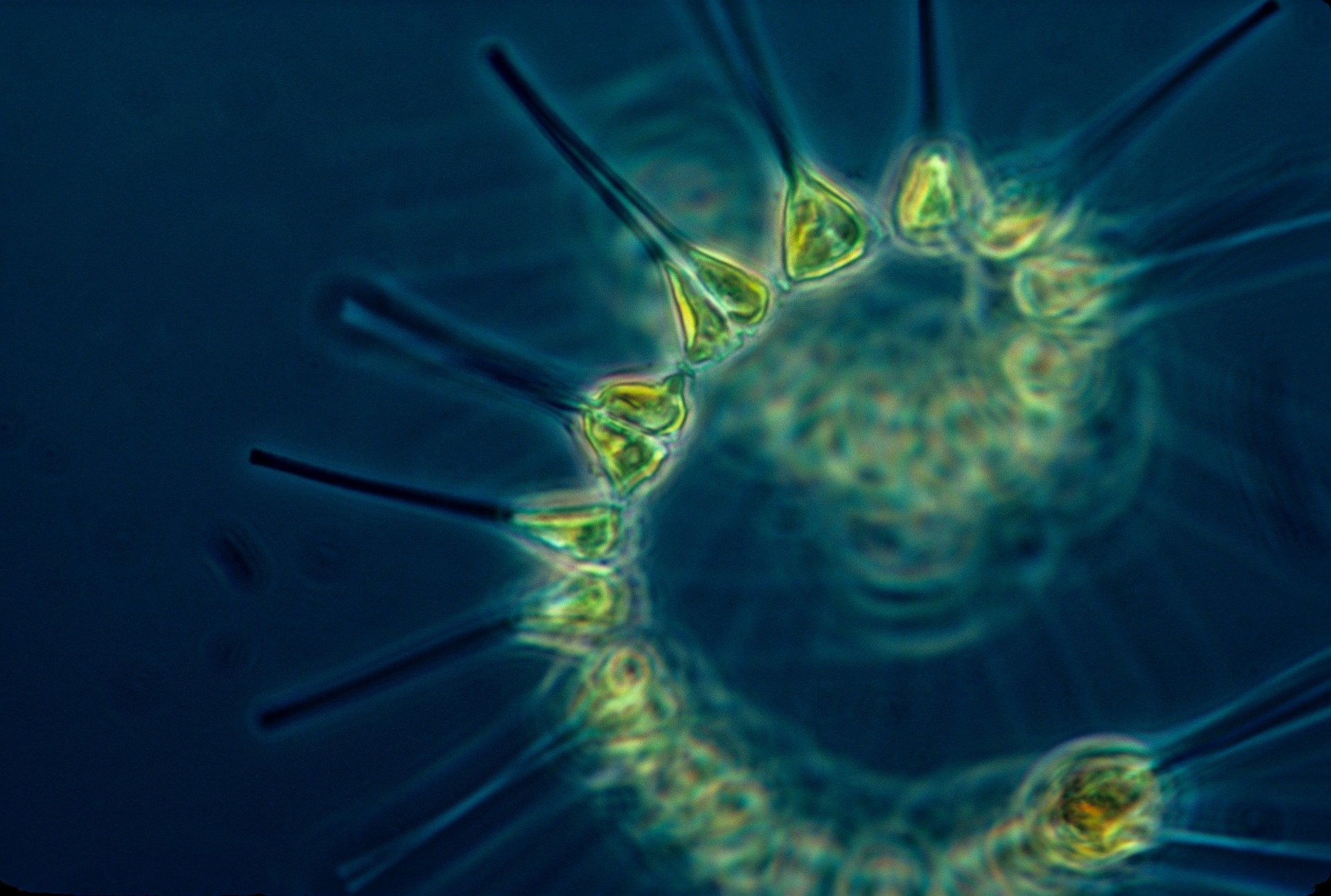By Natalie Stevenson
A recent study highlights the vulnerability of ocean ecosystems to the effects of climate change.
Over the past few years, the impact that humans have had on the planet has been at the forefront of public attention—we have seen record-breaking wildfires, droughts, flooding, and storms globally—and we are very much aware that conditions are probably getting worse rather than better. One of the key questions prompted by these changes is whether ecosystems across the planet will adjust to their new situation: Will all the animals and plants we take for granted still be here in a hundred years?
The planet has gone through many periods of climate change over geological time that are well-recorded in rocks and fossils. These records show how organisms have adapted to changing conditions in the past, knowledge we can then use to model future scenarios. One such fossil record is that of planktonic foraminifera. Although single-celled and tiny, foraminifera have calcium carbonate shells, called tests, that make up large volumes of deep-sea sediment and are integral to the transport of organic material into deeper waters. This process happens via a substance called marine snow, clumps of organic debris that gather around tests before sinking through the water column. In addition to this, foraminifera provide a crucial link in marine food chains as primary consumers, enabling the energy from nannoplankton, which are too small to be consumed directly by most multicellular organisms, to be passed up the food chain.
The tendency for foraminifera to redistribute as climatic conditions vary suggests their population will reduce under the conditions of modern climate change.
Studies of planktonic foraminifera in the modern day show that the main factor determining their global distribution is temperature. Each species has a unique optimum temperature range, constrained by drops in their growth rate at either extreme. Given this evident temperature sensitivity, a new paper has used the change in the distribution of foraminifera species over the past 700,000 years to gain insight into how they might cope with our rapidly changing climate. This study showed that instead of remaining in the same place and adapting to a changing environment, foraminifera tracked their optimum conditions across the globe, migrating to new locations as climate regimes shifted.
What does this mean in the context of modern climate change? A study by Burfield and colleagues showed that species with a better ability to adapt in situ—meaning that they stay put and adjust as the climate changes around them—tend to have more ecological and geographic success. Therefore, the tendency for foraminifera to redistribute as climatic conditions vary suggests their population will reduce under the conditions of modern climate change.
The reducing population of foraminifera is likely to result in significant changes to ocean chemistry, with consequences that are still poorly understood. The situation is complicated further by ocean acidification. Acidic ocean waters make it much more difficult for organisms, including foraminifera, to build their calcium carbonate shells and tests, leading to an accumulation of the constituent calcium and carbonate ions in the water. Carbonate ions, however, contribute to alkalinity due to their basic nature and so counteract the process of acidification. These opposing processes drive a complex feedback mechanism in seawater chemistry. The outcome in the short term could be a buffer against ocean acidification, but clearly at the expense of calcifying organisms and the ecosystems that depend on them.
The case of planktonic foraminifera highlights the complexity of the Earth’s many systems and feedback loops, which we are only beginning to comprehend. Geological history may provide some clues for what to expect in the future, but many questions remain on just how current climate change will affect the organisms which underpin biogeochemical cycles and ecosystems that we take for granted.
Photo by FotoshopTofs on Pixabay
1. Antell, G., Fenton, I., Saupe, E., Valdes, P. (2021) Thermal niches of planktonic foraminifera are static throughout glacial-interglacial climate change. Proceedings of the National Academy of Sciences of the United States of America, vol 118 (18)
2. Bopp, L., Gehlen, M., Lombard, F., Roy, T. (2015). Projected impacts of climate change and ocean acidification on the global biogeography of planktonic foraminifera. Biogeosciences, vol 12, pp 2873-2889
3. Burfield, I., Evans, M., Jiguet, F., Lavergne, S., Thuiller, W. (2012). Are species’ responses to global change predicted by past niche evolution? Philosophical Transactions of the Royal Society, vol 368:20120091
4. D’Hont, S., Rutherford, S., Prell, W. (1999). Environmental controls on the geographic distribution of zooplankton diversity. Nature, vol 400, pp 749-753
5. Davis, C., Gaylord, B., Hill, T., Rivest, E., Russell, A., Sanford E. (2017) Ocean acidification compromises a planktic calcifier with implications for global carbon cycling. Nature Scientific Reports, vol 17 (2225), pp 1-8
6. Jackson, B. (2008). Ecological extinction and evolution in the brave new ocean. Proceedings of the National Academy of Sciences of the United States of America, vol 105, pp 11458-11465
7. Lipps, J., Valentine, J. (1970). The role of foraminifera in the trophic structure of marine communities. Lethaia, vol 3 (3), pp 279-286
8. Marshall, D., Mondro, K., Munday, P., Pandolfi, J., Warner, R. (2013). Predicting evolutionary responses to climate change in the sea. Ecology Letters, vol 16, pp 1488-1500.
9. National Oceanic and Atmospheric Administration (2020) Ocean acidification, viewed 8th May 2021, https://www.noaa.gov/education/resource-collections/ocean-coasts/ocean-acidification





